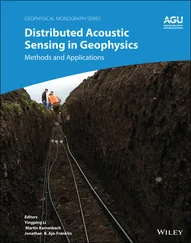As an aside, some authors make a distinction between distributed systems, which are designed to allow many users to work together, and parallel systems, whose only goal is to achieve maximum speedup on a single problem, as our 500,000-MIPS machine might. We believe that this distinction is difficult to maintain because the design spectrum is really a continuum. We prefer to use the term "distributed system" in the broadest sense to denote any system in which multiple interconnected CPUs work together.
A next reason for building a distributed system is that some applications are inherently distributed. A supermarket chain might have many stores, each of which gets goods delivered locally (possibly from local farms), makes local sales, and makes local decisions about which vegetables are so old or rotten that they must be thrown out. It therefore makes sense to keep track of inventory at each store on a local computer rather than centrally at corporate headquarters. After all, most queries and updates will be done locally. Nevertheless, from time to time, top management may want to find out how many rutabagas it currently owns. One way to accomplish this goal is to make the complete system look like a single computer to the application programs, but implement decentrally, with one computer per store as we have described. This would then be a commercial distributed system.
Another inherently distributed system is what is often called computer-supported cooperative work,in which a group of people, located far from each other, are working together, for example, to produce a joint report. Given the long term trends in the computer industry, one can easily imagine a whole new area, computer-supported cooperative games,in which players at different locations play against each other in real time. One can imagine electronic hide-and-seek in a big multidimensional maze, and even electronic dogfights with each player using a local flight simulator to try to shoot down the other players, with each player's screen showing the view out of the player's plane, including other planes that fly within visual range.
Another potential advantage of a distributed system over a centralized system is higher reliability. By distributing the workload over many machines, a single chip failure will bring down at most one machine, leaving the rest intact. Ideally, if 5 percent of the machines are down at any moment, the system should be able to continue to work with a 5 percent loss in performance. For critical applications, such as control of nuclear reactors or aircraft, using a distributed system to achieve high reliability may be the dominant consideration.
Finally, incremental growth is also potentially a big plus. Often, a company will buy a mainframe with the intention of doing all its work on it. If the company prospers and the workload grows, at a certain point the mainframe will no longer be adequate. The only solutions are either to replace the mainframe with a larger one (if it exists) or to add a second mainframe. Both of these can wreak major havoc on the company's operations. In contrast, with a distributed system, it may be possible simply to add more processors to the system, thus allowing it to expand gradually as the need arises. These advantages are summarized in Fig. 1-1.
| Item |
Description |
| Economics |
Microprocessors offer a better price/performance than mainframes |
| Speed |
A distributed system may have more total computing power than a mainframe |
| Inherent distribution |
Some applications involve spatially separated machines |
| Reliability |
If one machine crashes, the system as a whole can still survive |
| Incremental growth |
Computing power can be added in small increments |
Fig. 1-1.Advantages of distributed systems over centralized systems.
In the long term, the main driving force will be the existence of large numbers of personal computers and the need for people to work together and share information in a convenient way without being bothered by geography or the physical distribution of people, data, and machines.
1.2.2. Advantages of Distributed Systems over Independent PCs
Given that microprocessors are a cost-effective way to do business, why not just give everyone his [1] Please read "his" as "his or hers" throughout this book.
own PC and let people work independently? For one thing, many users need to share data. For example, airline reservation clerks need access to the master data base of flights and existing reservations. Giving each clerk his own private copy of the entire data base would not work, since nobody would know which seats the other clerks had already sold. Shared data are absolutely essential to this and many other applications, so the machines must be interconnected. Interconnecting the machines leads to a distributed system.
Sharing often involves more than just data. Expensive peripherals, such as color laser printers, phototypesetters, and massive archival storage devices (e.g., optical jukeboxes), are also candidates.
A third reason to connect a group of isolated computers into a distributed system is to achieve enhanced person-to-person communication. For many people, electronic mail has numerous attractions over paper mail, telephone, and FAX. It is much faster than paper mail, does not require both parties to be available at the same time as does the telephone, and unlike FAX, produces documents that can be edited, rearranged, stored in the computer, and manipulated with text processing programs.
Finally, a distributed system is potentially more flexible than giving each user an isolated personal computer. Although one model is to give each person a personal computer and connect them all with a LAN, this is not the only possibility. Another one is to have a mixture of personal and shared computers, perhaps of different sizes, and let jobs run on the most appropriate one, rather than always on the owner's machine. In this way, the workload can be spread over the computers more effectively, and the loss of a few machines may be compensated for by letting people run their jobs elsewhere. Figure 1-2 summarizes these points.
| Item |
Description |
| Data sharing |
Allow many users access to a common data base |
| Device sharing |
Allow many users to share expensive peripherals like color printers |
| Communication |
Make human-to-human communication easier, for example, by electronic mail |
| Flexibility |
Spread the workload over the available machines in the most cost effective way |
Fig. 1-2.Advantages of distributed systems over isolated (personal) computers.
1.2.3. Disadvantages of Distributed Systems
Although distributed systems have their strengths, they also have their weaknesses. In this section, we will point out a few of them. We have already hinted at the worst problem: software. With the current state-of-the-art, we do not have much experience in designing, implementing, and using distributed software. What kinds of operating systems, programming languages, and applications are appropriate for these systems? How much should the users know about the distribution? How much should the system do and how much should the users do? The experts differ (not that this is unusual with experts, but when it comes to distributed systems, they are barely on speaking terms). As more research is done, this problem will diminish, but for the moment it should not be underestimated.
A second potential problem is due to the communication network. It can lose messages, which requires special software to be able to recover, and it can become overloaded. When the network saturates, it must either be replaced or a second one must be added. In both cases, some portion of one or more buildings may have to be rewired at great expense, or network interface boards may have to be replaced (e.g., by fiber optics). Once the system comes to depend on the network, its loss or saturation can negate most of the advantages the distributed system was built to achieve.
Читать дальше












